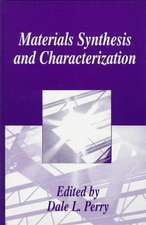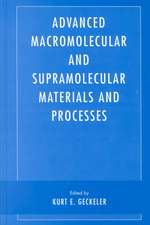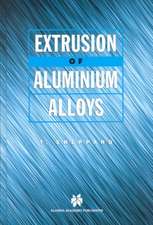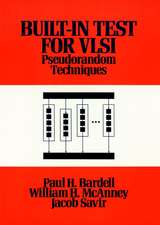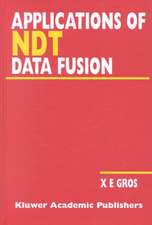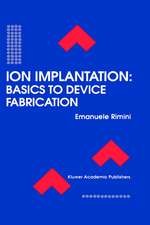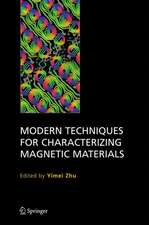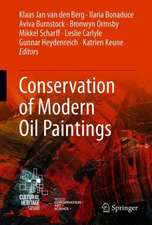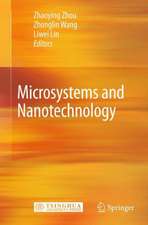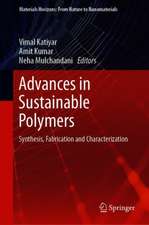Electron Microscopy of Nanotubes
Autor Zhonglin Wang, Chun Huien Limba Engleză Hardback – 30 mai 2003
Preț: 953.82 lei
Preț vechi: 1163.20 lei
-18% Nou
Puncte Express: 1431
Preț estimativ în valută:
182.51€ • 190.56$ • 151.05£
182.51€ • 190.56$ • 151.05£
Carte tipărită la comandă
Livrare economică 04-18 aprilie
Preluare comenzi: 021 569.72.76
Specificații
ISBN-13: 9781402073618
ISBN-10: 1402073615
Pagini: 310
Ilustrații: XIV, 310 p.
Dimensiuni: 155 x 235 x 27 mm
Greutate: 0.69 kg
Ediția:2003
Editura: Springer Us
Colecția Springer
Locul publicării:New York, NY, United States
ISBN-10: 1402073615
Pagini: 310
Ilustrații: XIV, 310 p.
Dimensiuni: 155 x 235 x 27 mm
Greutate: 0.69 kg
Ediția:2003
Editura: Springer Us
Colecția Springer
Locul publicării:New York, NY, United States
Public țintă
ResearchDescriere
Research in carbon nanotubes has reached a horizon that is impacting a variety of fields, such as nanoelectronics, flat panel display, composite materials, sensors, nanodevices, and novel instrumentation. The unique structures of the nanotubes result in numerous superior physical and chemical properties, such as the strongest mechan ical strength, the highest thermal conductivity, room-temperature ballistic quantum conductance, electromechanical coupling, and super surface functionality. Several books are available that introduce the synthesis, physical and chemical properties, and applications of carbon nanotubes. Among the various analytical techniques, high-resolution transmission electron microscopy (HRTEM) has played a key role in the discovery and characterization of carbon nanotubes. It may be claimed that carbon nanotubes might not have been discovered without using HRTEM. There is a great need for a book that addresses the theory, techniques, and applications of electron microscopy and associated techniques for nanotube research. The objective of this book is to fill this gap. The potential of HRTEM is now well accepted in wide-ranging communities such as materials science, physics, chemistry, and electrical engineering. TEM is a powerful technique that is indispensable for characterizing nanomaterials and is a tool that each major research institute must have in order to advance its research in nanotechnology.
Cuprins
Preface. List of Contibutors. 1. Single walled carbon nanotubes; L.C. Qin. 2. Electron diffraction and microscopy of single-wall carbon nanotube bundles; J.F. Colomer, G.van Tendeloo. 3. Nanodiffraction of carbon nanotubes; J.M. Cowley. 4. The smallest carbon nanotubes; N. Wang. 5. EELS of carbon nanotubes and onions; T. Stöckli. 6. Carbon nanostructures under the electron beam: Formation of new structures and in-situ study of radiation-induced processes; S. Trasobares, P.M. Ajayan. 7. In-situ mechanical properties of nanotubes and nanowires; Z.l. Wang. 8. In-situ field emission of carbon nanotubes; Z.l. Wang. 9. In-situ electric transport of carbon nanotubes; Z.l. Wang. 10. Electron microscopy of boron nitride nanotubes; D. Golberg, Y. Bando. 11. Inorganic nanoparticles with fullerene-like structure and inorganic nanotubes; R. Tenne, R. Popovitz-Biro.



